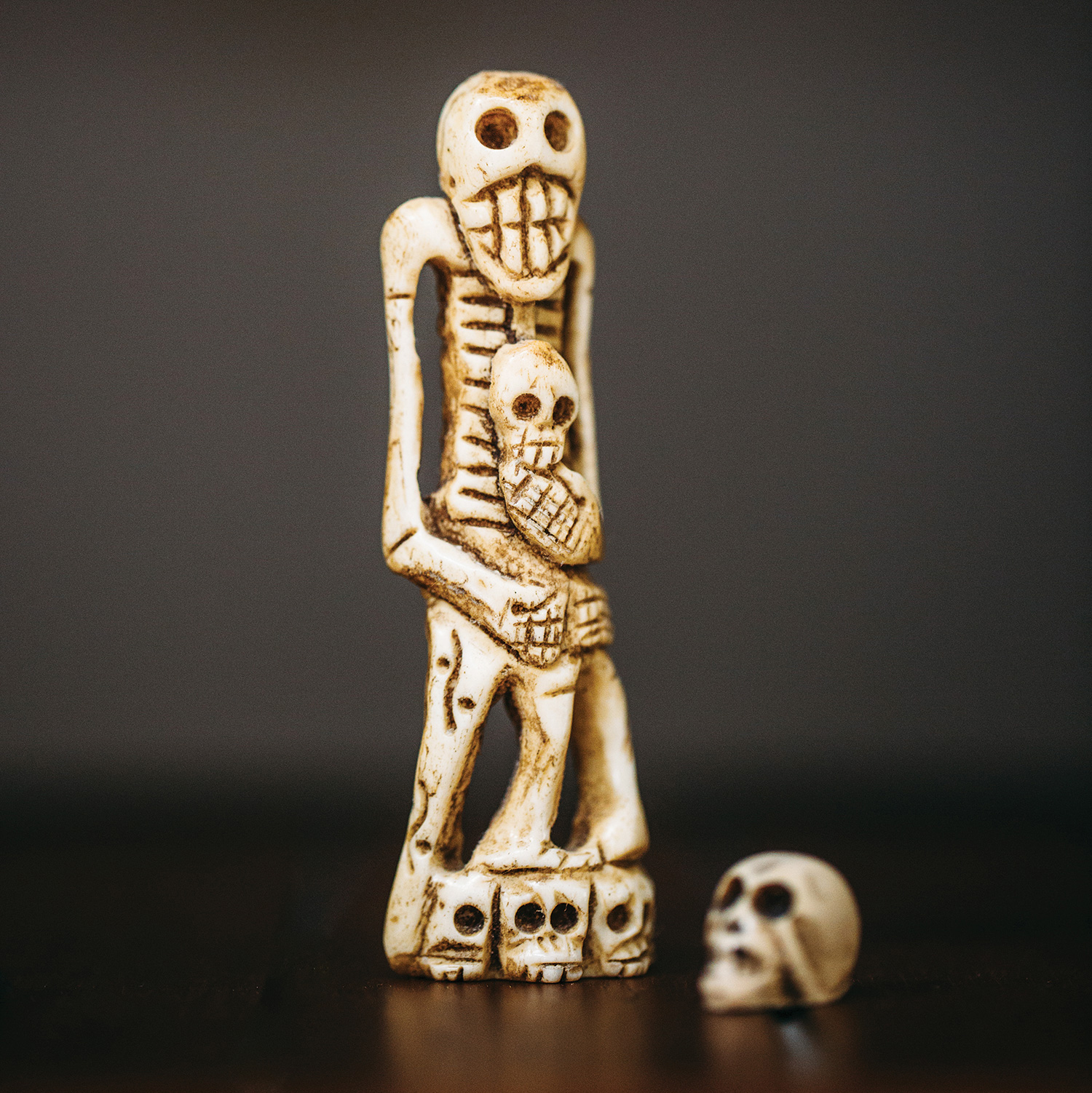
Lisa Swain of Hendersonville collects skulls, skeletons, and spiders — and joyfully displays them in her living room, kitchen, and car. They sit on shelves and mantels, and take up space in her closets and basement. She wears them, too, and has been making that kind of fashion statement since she was a teenager. But her collection isn’t truly grotesque — it’s not made of living insects or human bones. It is primarily folk art, based on the Mexican celebration of Día de los Muertos, aka Day of the Dead.
Swain has always loved anatomy and anthropology, and the kind of pieces she collects artfully combine those two interests. “When I was a teenager, I had an alternative leaning,” she says, “and that’s when I got into it.”
She first encountered Day of the Dead art in 1987, at an exhibit in Fort Worth, Texas. She bought a print she still has, of a skeleton wearing a tux and tails, accompanied by a doggie skeleton. There are scrapbook photos of a teenaged Swain, standing in Washington National Cathedral, wearing a skull T-shirt and skull leggings. These days, she’s unable to keep track of how much Day of the Dead fabric and clothing she owns, and admits she has at least half a dozen boxes of skull-themed artwork that she hasn’t unpacked from her last move a few years ago.

“When I felt like I had too much I sold off a little figurine of a skull on a stack of books, and a skeleton lady sitting at a vanity putting on her makeup,” says Swain. “But I am one of those people where, when other people find out you like something, they go crazy and start giving you things. A friend made sugar-skull objects for my garden [the confection is an important part of the traditional Dead of the Dead ceremony]. I have a set of sugar-skull shot glasses. People send me skull T-shirts, and a friend on Facebook just sent me a sugar-skull keychain. I’ve got a framed linoleum print of a skull, and I used to have some Day of the Dead Christmas ornaments. I also have a piece a friend bought me when I lived in Dallas. It’s a toddler’s chair that looks like a skeleton. My youngest son is terrified of it.”
And her oldest son is scared of spiders, but not so his mom — who’s way into those, too. The spider collection also dates back to Swain’s days as a high-school Goth, and includes antique brooches, Central American pottery — her grandmother’s family is from Panama — and a Raku vase embellished with a spider and web. “I even had spiders on my wedding invitations,” she cheerfully reveals.

Her husband is fully supportive of Swain’s obsession, and gave her one of her favorite pieces, a skull made of resin. “It’s a bride and groom, colorfully painted,” she says. “They are kissing over a tombstone, and the tombstone says ‘Love Never Dies.’” Then, for her fortieth birthday, he surprised her with a traditional banner-style Día de los Muertos garland, made of cut paper, mounted in a picture frame. “It has skeletal cats and a skeleton in a chef’s hat who is burning whatever he’s making, [with] the words ‘Kiss the Cook.’”
Real sugar skulls are typically decorated with happy smiles and colorful icing, and children eagerly look forward to receiving them as holiday treats. They’re also offered in cemeteries to departed loved ones, and celebrants even bake special “dead bread” for the festivities.
Día de los Muertos, held between October 31 and November 2, can be traced back to the Aztecs, and the holiday integrated sugar art — introduced to Mexico by Italian missionaries — in the 17th century. “In their culture, they think that the deceased come back in spirit on that night,” explains Swain. “If anything, it brings comfort. I like that skull art reminds us that we are so incredibly temporary, and that you shouldn’t diddle around not enjoying your life.”
Most of the pieces she collects resemble traditional sugar skulls but are actually made from painted clay, wire, and cotton.
“The ones made of real sugar don’t hold up all that well over time,” Swain says. “The piping cracks and the skulls get a little sad.” But if her children accidentally break a piece, she doesn’t act scary about it. “I grew up in a house with lots of irreplaceable antiques. When my kids came along, I didn’t want them to ever feel bad that they might break something precious.”
